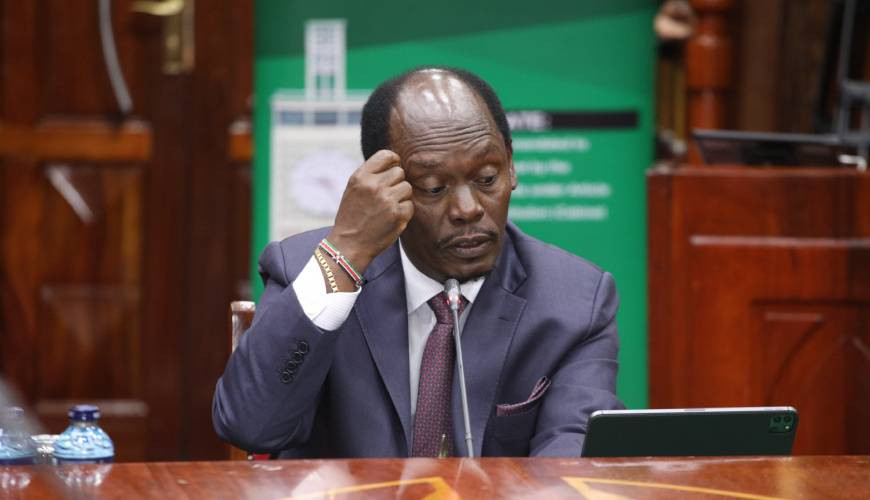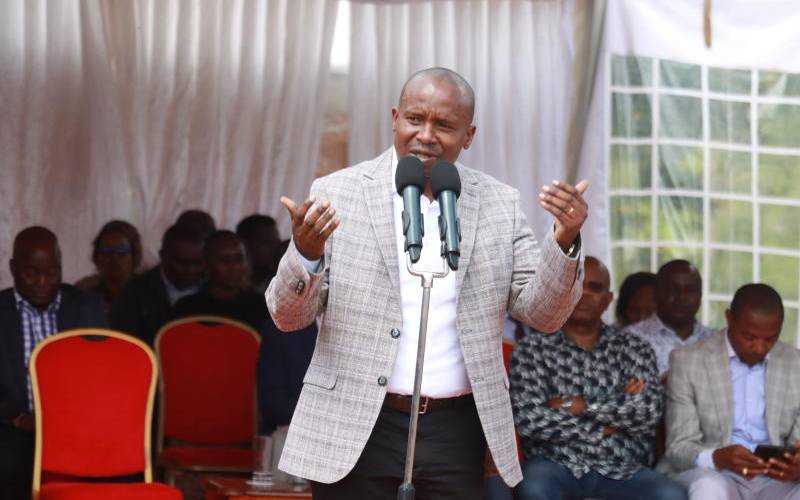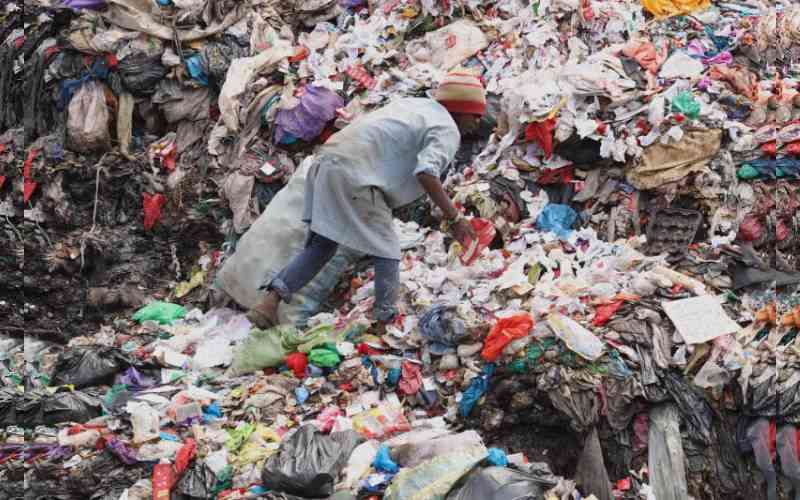
Since independence, successive regimes have invested heavily in making Kenya's energy supply more reliable and affordable.
While this has had mixed results, especially in the area of affordability, going by the ever-rising power bills for households and industries, there is no denying that the country has made commendable strides toward becoming energy-sufficient. Indeed, according to official data, 86 per cent of electricity generated in Kenya now comes from renewable energy sources following increased investment in the sector.
Geothermal accounts for a major portion of the power generated, while hydroelectric as well as solar and wind energy have boosted the stability of the grid, improving the attractiveness of Kenya as an investment destination for international investors.
Conversely, government efforts in ensuring the reliability, cost, and access to water by households and industries have been anything but satisfactory.
Water supply and sanitation (WSS) is a major sticking point in Kenya's economic growth agenda.
According to the World Bank, water is at the centre of economic and social development, considering that it is vital in maintaining health, growing food, managing the environment and creating jobs. According to the Bretton Woods Institution, two billion people lack access to safely managed drinking water, and 3.6 billion others lack access to safely managed sanitation despite the importance of the resource for human existence and industrial development.
African governments, Kenyan included, stand accused of not investing enough in improving water supply and sanitation, allocating not more than 0.5 per cent of their annual GDP to the sector. Kenya is classified as a water-scarce country with less than 1,000m3 per capita of renewable freshwater supplies. The situation has become even dire in the face of worsening climate change that has led to further depletion of the vital resource.
To appreciate the severity of the situation and the need to address it urgently, it is important to understand the country's water sector framework.
Kenya made major reforms to its WSS services sector following the passage of the Water Act, 2022, which was instrumental in decentralising services and creating the current institutional framework.
Under this framework, eight Water Services Boards (WSBs) are responsible for the efficient and economical provision of water and sewerage services in their respective jurisdictions.
These are, Athi (which serves the capital Nairobi), Coast, Tana, Lake Victoria North, Lake Victoria South, Northern, Rift Valley Water Services Board, and since 2008, Tanathi Water Services Board.
They are responsible for asset development and assume overall responsibility for services, which have had varying degrees of success.
For instance, while more established entities like the Nyeri Water and Sanitation Company (Nyewasco) have shown consistency in the provision of services, those in emerging economic hubs like Kiambu and Thika have not fared very well. In Kiambu, the provision of water and sanitation services falls under the purview of the Ruiru-Juja Water and Sewerage Company (Rujwasco) under the licensing of the Water Services Regulatory Board (Wasreb).
The company has undertaken various projects within the county to enhance water supply and sanitation services, such as the Ruiru Water Supply Project, which saw the enhancement of water throughput capacities to 17,000 meters per day. However, increased industrial and residential investments in the county, have left its capacity stretched and, according to residents and businesses, grossly mismanaged. "When you don't need water, they always have it. When you need it desperately, there's always some technical problem and they solicit off-the-books payments to turn on the water again," lamented one Kiambu County business leader, who requested anonymity.
Stay informed. Subscribe to our newsletter
During the Uhuru Kenyatta administration, it is alleged a massive water supply was diverted to the Kenyatta family-owned Brookside Dairy, on the east side of the Thika Superhighway, in the neighbourhood of Northlands development, which has sold land to foreign investors, too. With the change of regime, the water supply has gone dry for landowners along the Eastern Bypass.
Amid politics and water mismanagement, the water regulator Water Services Regulatory Board (WASREB) has continued to build the capacity of the public Water Service Providers(WSPs) in the region. In addition, other privately owned WSPs such as Tatu City, Two Rivers, Kiamumbi, Runda Water, and others, have started to take matters into their own hands by diversifying their water supply in order not to be subjected to the whims of the sector's inefficiency.
It is against this backdrop that private entities are undertaking the development of their own water treatment plants and are investing heavily in future-proofing their project's water needs.
The water and waste management needs of such an investment are huge and keep morphing. These multi-billion-shilling investments include future planning to accommodate industrial and residential growth. Nyewasco has continuously been rated the top public water service provider in the country for over a decade. While this is a commendable achievement that is largely underpinned by their sound strategic plans, it doesn't address the unique needs of large-scale mixed-use industrial and residential investors. Perhaps, this is an opportunity for Nyewasco to explore to catalyse industrial investments in Nyeri County. This speaks to the need for public entities to do more to accommodate the growing needs of investors if devolved units hope to reap the benefits of increased foreign direct investments fully.
Part of the proposed reforms would be complementary human resources, management training, and additional financial sources to effectively scale up WSS services.
Key to the success of this approach is the adoption of the draft Sector Investment Plan and the rationalisation of local water rate structures that ensure better cost-recovery, conserve water, and are geared toward pro-poor access and equity policies as proposed by one of Kenya's major development partners, USAid.
These efforts must be coupled with robust performance tracking to ensure cost-effectiveness and measurable outcomes. Good monitoring and evaluation would help inform future investment planning and bring transparency to the WSS sector.
It would also help the WSBs reduce non-revenue water, which is estimated at 60 per cent, effectively communicate the new WSS service framework to their customers, and create water rate structures that meet revenue requirements.
In summary, the same zeal and focus that the government is channeling towards the energy sector to make it more accessible, affordable and attract the much-needed FDI, should be applied in the water sector.
The writer is a mechanical engineer
 The Standard Group Plc is a
multi-media organization with investments in media platforms spanning newspaper
print operations, television, radio broadcasting, digital and online services. The
Standard Group is recognized as a leading multi-media house in Kenya with a key
influence in matters of national and international interest.
The Standard Group Plc is a
multi-media organization with investments in media platforms spanning newspaper
print operations, television, radio broadcasting, digital and online services. The
Standard Group is recognized as a leading multi-media house in Kenya with a key
influence in matters of national and international interest.
 The Standard Group Plc is a
multi-media organization with investments in media platforms spanning newspaper
print operations, television, radio broadcasting, digital and online services. The
Standard Group is recognized as a leading multi-media house in Kenya with a key
influence in matters of national and international interest.
The Standard Group Plc is a
multi-media organization with investments in media platforms spanning newspaper
print operations, television, radio broadcasting, digital and online services. The
Standard Group is recognized as a leading multi-media house in Kenya with a key
influence in matters of national and international interest.






